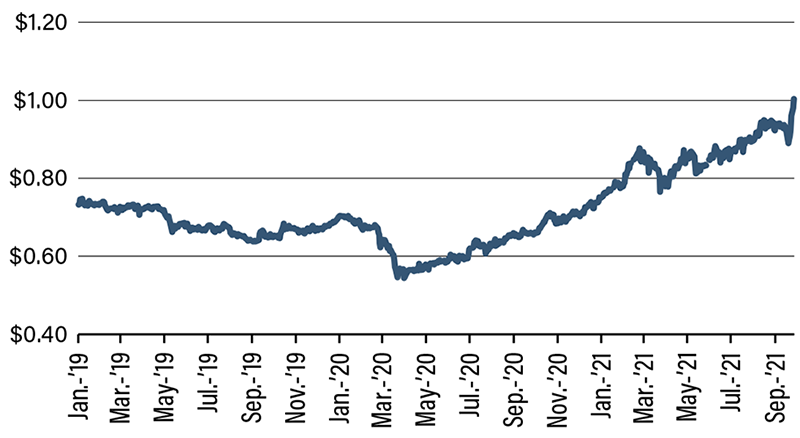High Cotton: Hold Onto Your T-Shirt

While most economists continue to believe recent price spikes are transitory, the hefty increases for some commodities may stick with us as the world faces supply deficits going forward. For example, aluminum, coal and cotton recently reached all-time highs as demand continues to exceed available supplies during the global economic recovery.
The high fiber prices mean the cost to make clothing is expected to increase, and retailers may find it hard to raise prices because consumer discretionary spending is constrained by the pandemic and stagnant real wages. Even so, sellers may still try to pass those expenses on to customers, resulting in inflation for everything from T-shirts to jeans. Both are so comfortable that you may want to get some more mileage out of your worn-in cotton favorites before they get donated or tossed in the trash.
The World Needs More Cotton
Cotton futures climbed past $1 a pound for the first time in nearly a decade. In New York, the contract for December delivery climbed to $1.0155 a pound, the highest price since November 2011. The cost has surged 28 percent this year as torrid demand, especially from China, combines with crop disruptions, the pandemic and logistics chaos spurred by slow transit times and rising freight costs.
Can America Keep Up?
The U.S. is the world’s biggest cotton exporter. In fact, U.S. exports in the 2020-’21 season ended in July were the highest in 15 years at 16.4 million bales. Unfortunately, heavy rains are threatening cotton crops in major U.S. growing regions such as Texas and the Mississippi Delta. Other key growing countries such as Bangladesh, Pakistan and India are having crop problems as well. Cotton is projected to see a second straight year of global supply deficits, and China, the top user of the commodity, needs new sources of the fiber for its textile industry. The country recently eclipsed Vietnam as the largest destination for U.S. cotton for the first time in six years. Mexico, also a major buyer, is set to purchase the most American fiber in 11 years.
So, instead of “out with the old and in with the new” cotton clothes, you might want to hold onto those worn-in favorites a little while longer.
Cotton Prices, Per Pound

